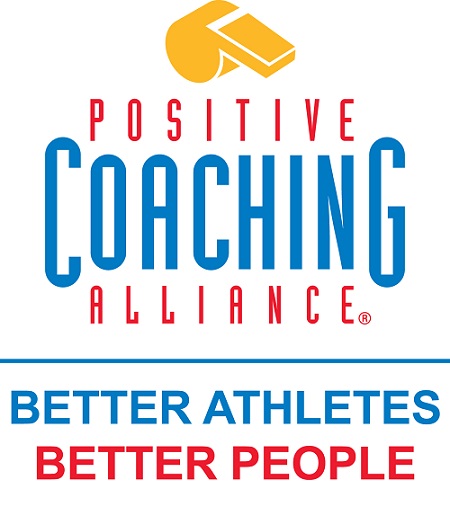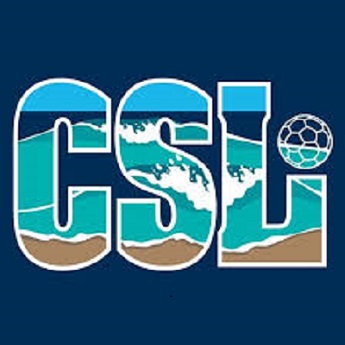Time devoted to injury prevention is not always taken into consideration when planning a training session. Injury prevention is not like teaching skills, tactics, or fitness, where you can see some evidence of your knowledge and experience rather quickly. Additionally, most of the prevention exercises look pretty simple so the question always lingers: can they really be all that effective? There has been a flurry of injury prevention studies in recent years, some in soccer and some in other team sports like volleyball and team handball that show just how effective these programs can be when applied on a regular basis.
Your time with a team each week is short, so you should only use programs and activities that have sound evidence that back up their inclusion into your arsenal of options for training. Research into injury prevention follows a well-established model, so I will take you through this process, highlighting programs with evidence of their effectiveness.
Step 1 - Just what is the rate of injury in soccer?
This is determined using established injury surveillance techniques on a large sample of players. Since the 1998 FIFA World Cup, FIFA has been conducting a surveillance program on every championship event it holds. The FA in England conducts an injury audit of its Premier League and League Championship teams. In the United States the NCAA has been conducting an injury surveillance program for over 20 years, so there is long term data on players college age and older. There are also a series of various smaller studies on younger ages. Most injuries are reported as a rate, usually as injuries per 1000 player hours (or per 1000 training hours and per 1000 match hours).
Here is a table that summarizes injury rates (per 1000 player hours) from some of the published studies:
| |
Males |
Females |
| Youth |
10/1000 ph |
|
| Adolescents |
16 |
8 |
| College |
25 |
22 |
| Professionals |
23 |
23 |
| Overall match* |
25-30 |
13-24 |
| Overall training |
3-7 |
3-4 |
*international competition rates are 2 to 3 times higher
The most common injuries are the ones you would like to prevent. Injuries get categorized as medical treatment injuries (which can be treated with little, if any, time lost) or time loss injuries (where a player can not perform for days or longer). The most common injuries in soccer are contusions, which lead to little time loss. The top four time-loss injuries in soccer are ankle sprains, knee injuries, hamstring strains and groin strains with ankle sprains being most common in pre-college age players and hamstring strains being most common at higher levels of competition.
Step 2 - How do injuries occur?
The mechanisms of injury can get quite complex and are a topic for another posting. Let’s just say that injuries can both occur in the absence of direct contact to the injured body part or as a result of direct contact, mostly during tackling. Most of the injury prevention programs address non-contact injuries.
Step 3 - Devise prevention programs and then
Step 4 - Reassess injury rate to determine the program’s effectiveness.
Many studies have been done, most in the last five to seven years. Here are some examples:
- Soccer injuries and their prevention. A multifaceted, medically administered program led by Jan Ekstrand in 1984.
- The first study on preventing soccer injuries. Many, many interventions were used. They showed a 77 percent reduction in all injuries.
- Avoidance of soccer injuries with preseason training by RS Heidt. A summer conditioning program of speed, agility, quickness and strength activities
- 35 percent reduction in injuries. 11 season ending injuries in the control group, but only 1 in the training group.
- The PEP program by Bert Mandelbaum. A guided warm-up designed to prevent ACL injuries in adolescent girls.
- 30 percent reduction in all injuries. 65 percent reduction in ACL injuries.
- Preventing injuries in young female team handball players by OE Olson. A prescribed warm-up consisting of landing, cutting, plyometric, and balance exercises.
- Significant reductions in all injuries: match injuries, training injuries, acute, overuse, knee, ankle, as well as multiple injuries and re-injuries.
- Prevention of soccer injuries. Astrid Junge. A program of balance, coordination, core, and plyometric exercises for adolescent males.
- 37 percent reduction in injuries. Fewer overuse, training, and match injuries. The most highly skilled players had the fewest injuries. This served as the foundation for the eventual F-MARC 11 injury prevention program.
- Preventing hamstring strains by A. Arnason. Eccentric hamstring curl exercises for strength.
- 60-65 percent reduction in hamstring strains. Most effective at preventing the first strain.
- Preventing ankle sprains in volleyball players by E Verhagen. Plyometrics and balance to prevent ankle sprains.
- Significant reduction in ankle sprains, but only in those with a history of ankle sprains. Not effective at preventing the first sprain.
In general, research shows that injuries can be reduced by around one-third, but you have to make these a regular, not occasional, part of training. Nearly all these programs have common emphasis on improving: core strength, muscle strength, balance, proprioception, coordination, landing and cutting skills. All this can be done with a guided warm-up that does not take time away from soccer specific training.
While the research is impressive, are such programs effective when implemented on a really large scale, like across an entire country? F-MARC is conducting ongoing studies in Switzerland and New Zealand on a country-wide basis in conjunction with their accident insurance carriers. If a program is effective, there should be a reduction in claims. Below is a graph of accident claims in Switzerland showing the reduction in soccer-related injuries since introduction of the F-MARC 11 after 2003. These programs are effective in the eyes of coaches as well as insurers.

One thing that coaches worry about is those ‘medical-types’ wanting to take over. This couldn’t be further from the truth. If a person with a science background wants to coach, they coach. The rest have one goal in mind: ensuring that you, the coach, have the healthiest players possible to execute your vision of the game while developing the players so they have a safe, fun and fulfilling experience. What you will see is that these programs are geared to a part of training that everybody does but many don't put enough thought into. Coaches will appreciate some direction on just how to conduct a warm-up that is effective at preparing the team for training and competition while preventing the most common soccer injuries.
For more information:
http://www.fifa.com/aboutfifa/developing/medical/the11/index.html - click on Launch The 11 for video clips and explanations of the exercises that came out of the study by Astrid Junge.
http://www.aclprevent.com/aclprevention.htm for information about Dr. Mandelbaum’s PEP program.
http://www.fifa.com/aboutfifa/developing/medical/newsid=513864.html#prevention+injuries - click on the ‘index of content’ topics on the right side of the page for more on injury prevention.
References
- Arnason A, Andersen TE, Holme I, Engebretsen L, Bahr R. Prevention of hamstring strains in elite soccer: an intervention study. Scand J Med Sci Sports. 2008;18:40-8.
- Ekstrand J. Soccer Injuries and their prevention. Linköping University. Medical Dissertation #130. Linköping, 1982.
- Heidt RS Jr, Sweeterman LM, Carlonas RL, Traub JA, Tekulve FX. Avoidance of soccer injuries with preseason conditioning. Am J Sports Med. 2000;28:659-62
- Junge A, Rösch D, Peterson L, Graf-Baumann T, Dvorak J. Prevention of soccer injuries: a prospective intervention study in youth amateur players. Am J Sports Med. 2002;30:652-9.
- Mandelbaum BR, Silvers HJ, Watanabe DS, Knarr JF, Thomas SD, Griffin LY, Kirkendall DT, Garrett W Jr. Effectiveness of a neuromuscular and proprioceptive training program in preventing anterior cruciate ligament injuries in female athletes: 2-year follow-up. Am J Sports Med. 2005;33:1003-10.
- Olsen OE, Myklebust G, Engebretsen L, Holme I, Bahr R. Exercises to prevent lower limb injuries in youth sports: cluster randomized controlled trial. BMJ. 2005;330(7489):449.
- Verhagen E, van der Beek A, Twisk J, Bouter L, Bahr R, van Mechelen W. The effect of a proprioceptive balance board training program for the prevention of ankle sprains: a prospective controlled trial. Am J Sports Med. 2004;32:1385-93.
Future postings on how to apply programs to prevent ankle, knee and hamstring injuries will be available on ussoccer.com.
(Dr. Donald T. Kirkendall is on the U.S. Soccer Sports Medicine Committee and a member of the FIFA Medical Assessment and Research Centre.)






